Log in or create new account to save this product to your wishlist.
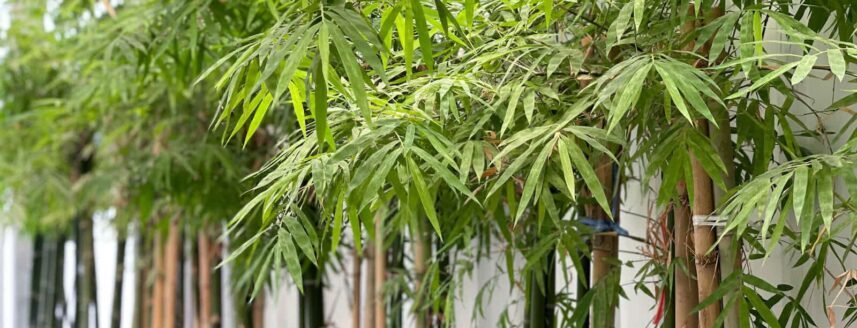
How to Grow and Care for Bamboo Plants
Discover everything you need to know about bamboo plants. Transform your garden or home into an oasis of green with our complete guide.
🌱 All important maintenance moments for your lawn during the year. Leave your email and we will send you the lawn calendar for free.
Enter your email
Receive the lawn calendar in the mail
Enjoy a green lawn all year round!

- Order by 2PM = shipped today
- 250.000+ satisfied customers!
- 60 day satisfaction guarantee
Bamboo is a versatile and striking plant with many valuable characteristics. Whether you’re looking for a lush hedge, a decorative accent, or a small potted plant, bamboo offers something for everyone. However, successfully planting and caring for bamboo plants requires attention and knowledge. In this extensive guide, you’ll gain insight into all aspects of planting and caring for these plants, enabling you to choose the perfect bamboo for your garden and maintain it without worry.
- Bamboo profile
- Different types of bamboo
- Popular bamboo species for indoors and outdoors
- When to plant bamboo?
- Planting bamboo in pots
- Planting bamboo in the garden
- Transplanting bamboo
- Caring for your bamboo
- Pruning bamboo
- FAQ about bamboo plants
- Use bamboo to beautify your garden
Bamboo profile
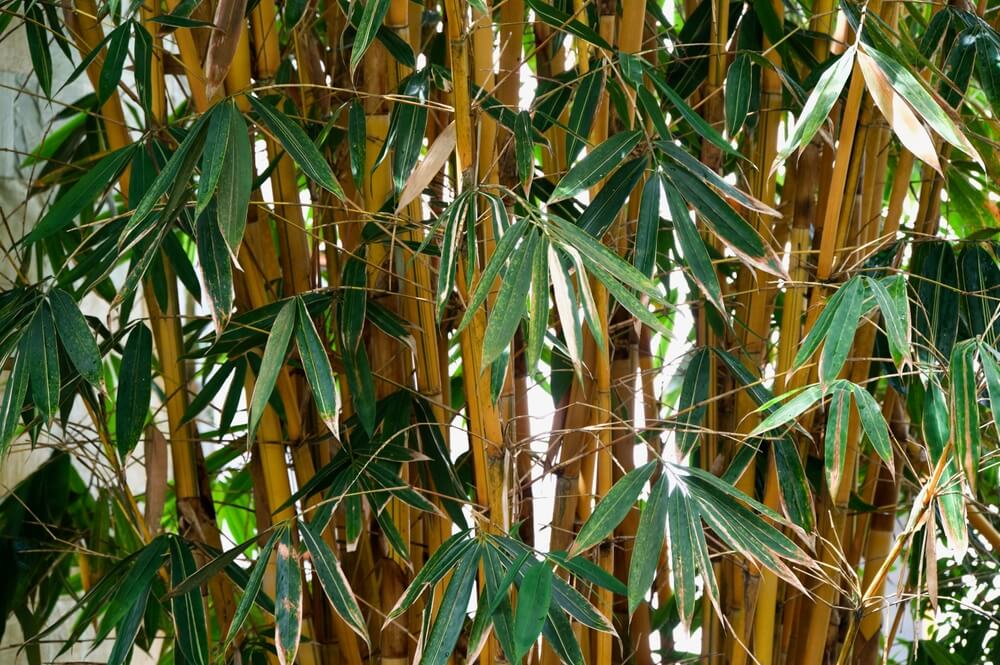
-
Light requirements: Most bamboo plants thrive in a light to semi-shady environment. Some species can handle direct sunlight, so make sure you pick the right kind, if you want to expose it to much sunlight.
-
Soil type: The plant prefers well-draining, nutrient-rich soil. Ensure a soil with plenty of organic material, so the roots receive sufficient nutrients.
-
Humidity: Bamboo likes a slightly moist environment. Regular spraying, especially in warm weather, is advisable to keep the plant healthy.
-
Wind protection: Strong winds can damage bamboo leaves and bend the plant. Therefore, pick a location with some shelter from fierce winds.
-
Growing space: The plant can grow quite large, especially invasive species. Consider the desired final size and possibly use a root barrier to limit growth.
-
Climate: Select a bamboo species that suits your climate well. Some species are more cold-resistant, while others prefer warmer conditions.
Different types of bamboo
The main distinguishing feature is the growth pattern – some species are invasive giants, while others have a more controlled, compact growth. Invasive types, such as many Phyllostachys species, are known for their aggressive underground runners that can quickly spread through your garden. These can eventually choke other plants, damage walls and cause problems with unhappy neighbours. Non-invasive species, like the Fargesia varieties, grow in limited clumps and don’t form underground runners.
If you want a worry-free bamboo garden? Select a non-invasive species. However, if you have more space and are willing to closely monitor growth, maybe even install underground root-barriers, you can dare to plant a species with more aggressive growth. However, if you want to get rid of it later on, you will have a lot of work on your hands. Better think hard about it.
Popular bamboo species for indoors and outdoors
There’s an enormous diversity of bamboo species, varying in height, leaf colour, growth rate, and growth pattern. Some popular bamboo plant choices for indoors and outdoors include:
Non-invasive bamboo
- Fargesia murieliae ‘Jumbo’: fine-leaved, compact species, ideal for pots
- Fargesia robusta ‘Campbell’: a robust, hardy species with glossy leaves
- Fargesia ‘Rufa’: an elegant species with drooping branches, also suitable for pots
Invasive bamboo
- Phyllostachys ‘Nigra-Henosis’: a species with dense, dark culms and green leaves
- Phyllostachys aurea: this species has golden yellow to orange-red culms and is very hardy
- Phyllostachys nigra: with spectacular black culms, this species can grow up to 10 metres tall
Bamboo for indoors
- Bambusa vulgaris: it’s the only true indoor bamboo plant, requiring lots of light and moisture
When to plant bamboo?
You can actually plant bamboo year-round, as long as the ground isn’t frozen. In practice, this means you can plant from early spring to late autumn, when temperatures are mild and the plant can establish itself well. Just avoid the winter months when planting bamboo outside. Do you want to plant bamboo in pots? Then you can plant in winter too. You can either keep the pots indoors or frost-proof the pots.
Planting bamboo in pots
Want to place bamboo in a pot or container on your terrace or balcony? Preferably, pick a non-invasive species, such as Fargesia. These require less space and are easier to control.
When planting in a pot, it’s important to select a pot at least twice the size of the bamboo’s root ball. First, fill the pot with a layer of hydro granules for better drainage of excess water. On top of that comes a layer of potting soil, after which you can place the bamboo plant.
Also ensure the pot has sufficient drainage, so the roots don’t sit in stagnant water. A pot with holes at the bottom and the use of hydro granules help with this.
Bamboo plants in pots do need some extra care, as the roots dry out faster. Keep the soil moist and provide regular feeding to stimulate healthy growth.
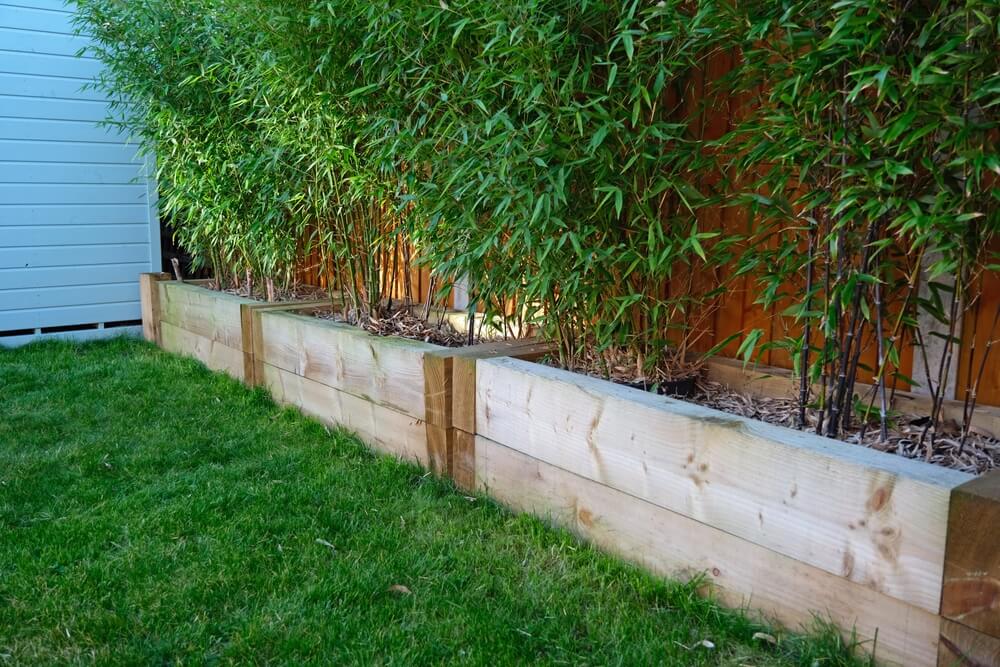
Planting bamboo in the garden
For planting bamboo in the ground, slightly different points of attention apply. First, it’s critical to determine whether you want an invasive or non-invasive species.
If you opt for an invasive bamboo, consider installing a root barrier. This is a strong plastic sheet that you place vertically in the soil around the planting area. It prevents the bamboo from spreading uncontrollably through your garden.
When planting, dig a hole twice the size of the root ball. Mix the excavated soil with compost or well-rotted manure to enrich it. Place the plant in the hole, ensuring the top of the root ball is level with the soil surface. Fill the hole with the enriched soil and water thoroughly.
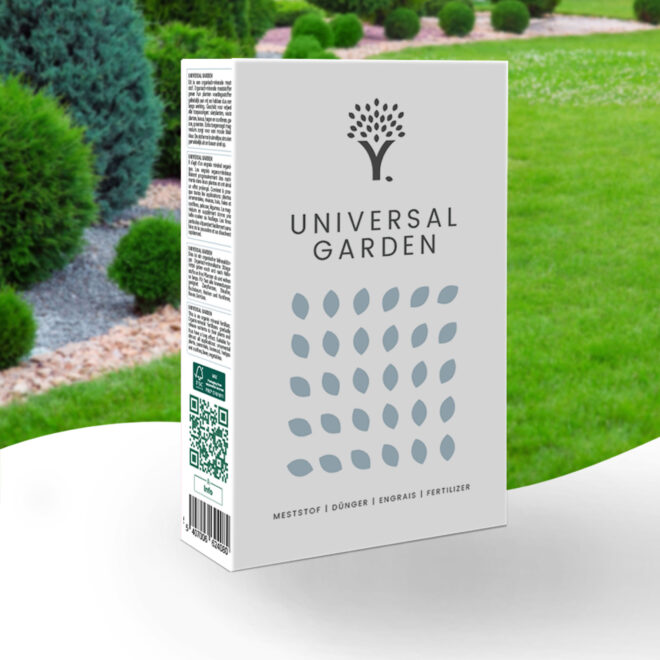
- Balanced formula
- Suitable for organic farming
- Ideal for all kinds of different plants
Transplanting bamboo
Occasionally, it may be necessary to replant your bamboo, for instance, if growth stagnates or the pot becomes too small. The best times for this are before or after the growing season, so in early spring or autumn.
For transplanting bamboo plants in pots, follow the same steps as for the original planting. Choose a new pot that allows room for further growth.
Transplanting bamboo into the ground, however, is much more labour-intensive. First, dig a large hole, expose the root ball, and then carefully remove the plant. Place it in the new hole and fill with soil. Don’t forget to install a root barrier here as well if you have invasive species.
Water the plant well afterwards and protect it from drying out in the first weeks after transplanting.
Caring for your bamboo
Proper care is essential for healthy bamboo growth. Here are some key care tips:
Watering
Bamboo needs consistent moisture, especially during its first growing season. Water deeply and regularly, but avoid waterlogging. In pots, check moisture levels more frequently.
Fertilising
Feed your bamboo plants in spring with a balanced, slow-release fertiliser. For potted bamboo, you might need to fertilise more often, perhaps monthly during the growing season.
Mulching
Apply a layer of organic mulch around your bamboo plants to retain moisture and suppress weeds. This also helps to regulate soil temperature.
Pruning
Remove any dead, damaged, or yellowing canes to maintain the plant’s appearance and health. You can also thin out dense growth to improve air circulation.
Frost protection
Some bamboo species might need protection in harsh winters. Wrap the plant in horticultural fleece or move potted bamboo to a sheltered spot.
Controlling spread
For invasive types planted in the ground, regularly check for and remove any shoots appearing outside your desired growing area.
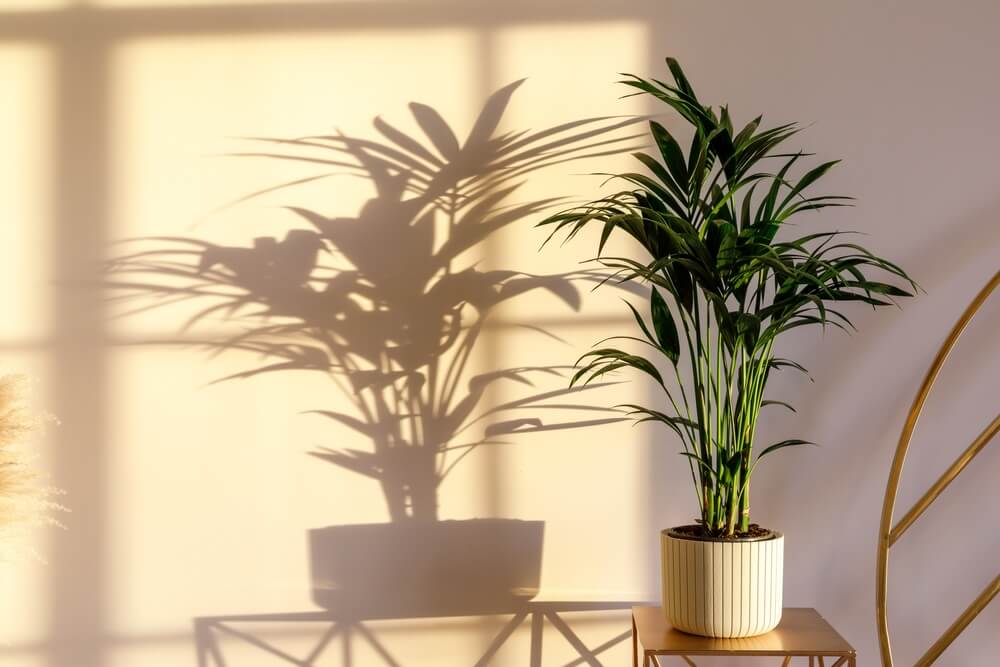
By following these guidelines, you’ll be well on your way to growing healthy, beautiful bamboo in your garden or on your patio. Remember, each bamboo species has its unique characteristics, so always research the specific needs of your chosen variety. With proper care and attention, your bamboo plants will thrive, providing a stunning green backdrop or focal point in your outdoor space.
Pruning bamboo
The best period to prune bamboo is from spring to autumn. When pruning, remove dead, diseased, or frozen shoots directly at the base. You can also get rid of withered leaves or branches in this way.
How often you need to prune bamboo depends on the species and growing conditions. Generally, it’s advisable to prune twice a year – in spring and summer. Use sharp pruning shears or professional hedge trimmers for this.
Besides pruning, it’s important to regularly check bamboo for signs of stress or diseases. Look out for discolouration, wilting, or shrivelling of leaves.
FAQ about bamboo plants
The plant cannot tolerate extreme cold, prolonged drought and poor drainage. Provide a sheltered location with well-drained soil to ensure the health of your bamboo.
Bamboo can be planted almost anytime, except in winter. Spring and autumn are ideal for open ground, while bamboo in pots can be planted all year round, as long as you protect the plant from frost.
Yes. Bamboo requires enough space to grow, depending on the species. Some species spread quickly, so make sure you have enough space or use root barriers to control growth.
Use bamboo to beautify your garden
With the tips from this article, you are now all set to plant and maintain bamboo yourself. Choose the right type of bamboo and take good care of your bamboo plants.
Do you want more ideas to create an incomparable garden that will make your neighbours a little jealous? Then discover the best hedges, or find out everything you require about lavender plants and sunflower sowing like a pro.
Do you have any questions or would you like more gardening advice? Please let us know in the comments section below!
Happy gardening!
-
Orchids: A Complete Guide on How to Care for ThemWant to give your orchid the best possible care? Discover essential tips from placement to watering and pruning. Learn everything you need to know!Read more
-
Growing Wisteria Made Simple: From Planting to Perfect BloomsWith blossoms like a purple waterfall, Wisteria sets an almost magical and colourful mood. If you want to grow this beauty in your garden, you’ll need a bit of patience. Don’t worry, it will most definitely pay off.Read more
-
How to Build a DIY Greenhouse: A Practical Guide for Smart SpendersImagine extending your growing season throughout the year, nurturing tender plants regardless of the weather, and creating a personal garden sanctuary. This is precisely what a DIY greenhouse offers you. Let’s learn how to build one.Read more
-
How to Grow Eucalyptus in British GardensWith a little love and care, eucalyptus trees can thrive in English gardens. Since they don’t germinate well without proper help, there are not considered invasive. So, there is no reason not to plant them if you enjoy their looks.Read more
-
Transform Your Garden with All-Year-Round Flowering PlantsDid you know you can enjoy blooming flowers even in January? With the right selection of all year round plants, there’s no need to wait until spring to add some colour to your garden.Read more
-
How to Create a Butterfly Garden: A Simple Guide for British GardensThe UK's butterfly population includes 59 different species. These beautiful winged creatures face a steady decline because of habitat loss, pollution and changing weather patterns. Your garden can become a vital link between nature reserves and natural habitats. Let’s explore how.Read more
-
Volcanic Rock Dust for Your Garden—Application and TipsDid you know that volcanic rock dust is a brilliant organic soil improver? This article explains exactly what it's good for and how to use it properly.Read more
-
How to Use Landscape Fabric ProperlyIf weeds or erosion in your garden are troubling you, landscape fabric might be the solution. We’ll explain how and when to use it properly, just keep on reading.Read more
Leave a comment
Your answer will be displayed on the site and the interested party will be notified by email.
Leave a comment
Have a question or want to share your experience? Leave us a comment.

- Order by 2PM = shipped today
- 250.000+ satisfied customers!
- 60 day satisfaction guarantee

- Order by 2PM = shipped today
- 250.000+ satisfied customers!
- 60 day satisfaction guarantee

🌱 All important maintenance moments for your lawn during the year. Leave your email and we will send you the lawn calendar for free.
Enter your email
Receive the lawn calendar in the mail
Enjoy a green lawn all year round!


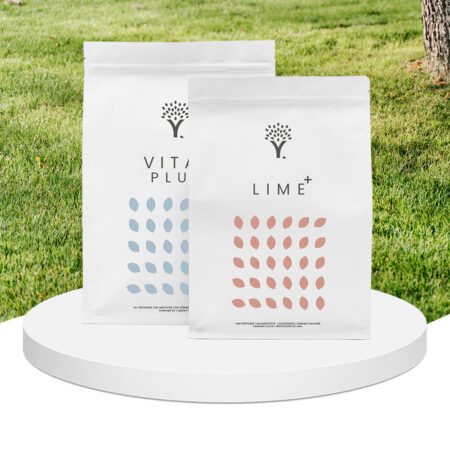


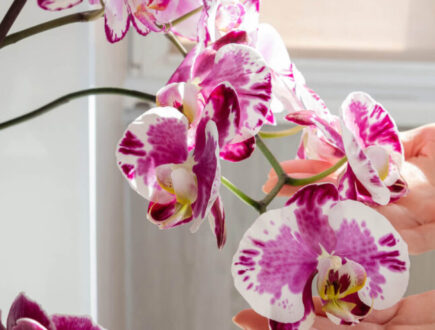
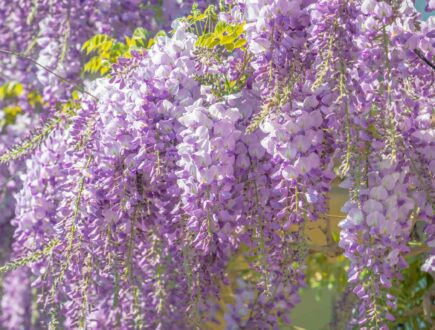








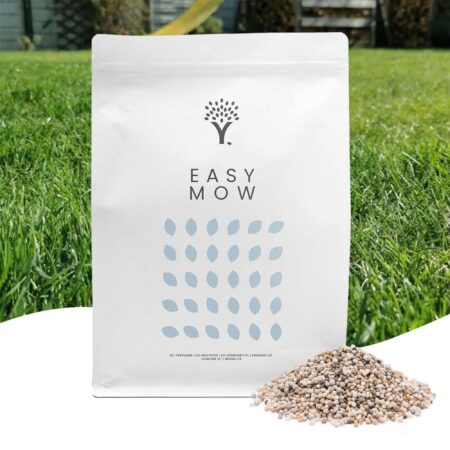
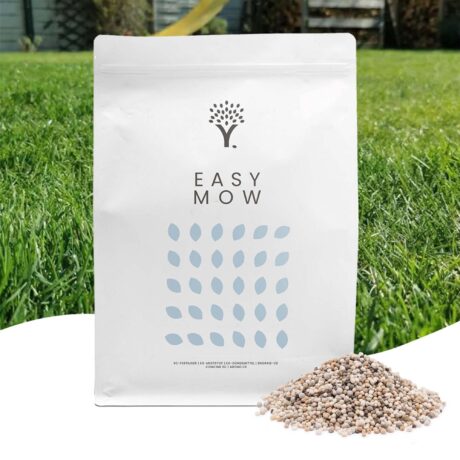





Comments (0)
There are no comments yet. Well then, what are you waiting for to
Be the first to write your comment!inaugurate this pretty page?
Do you have some comments?